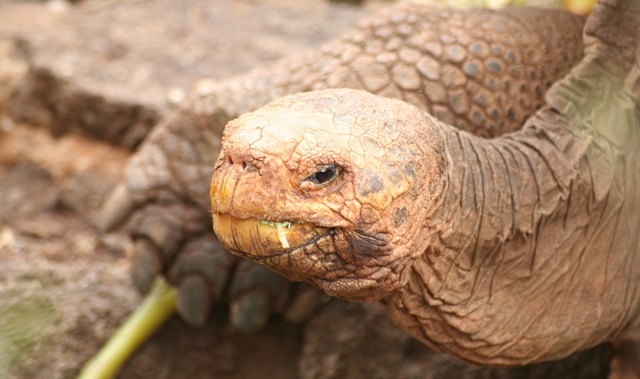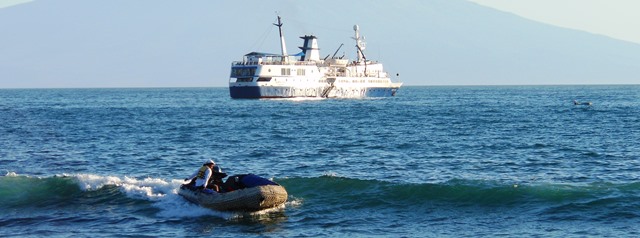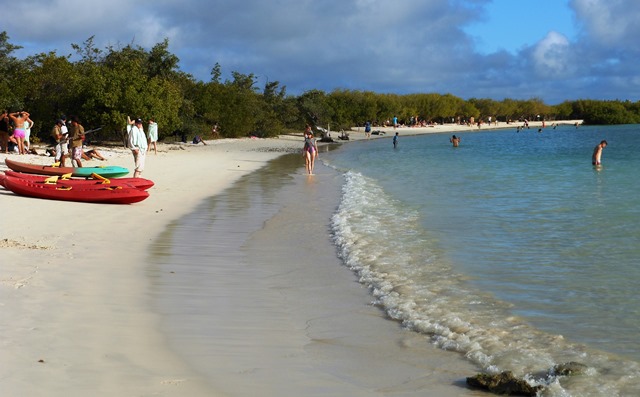I think the most striking thing about the Galapagos Islands is how cool all the animals are. Nesting birds gaze into your eyes, sea-lions gawp through your goggles, penguins swim past your nose and giant tortoises hobble over your feet. Even the reef shark that darted out of the mangroves and scythed past Christine’s legs didn’t bother to take a chunk out of her toes. Since the archipelago gained protected status a Zen-like calm appears to have descended over its inhabitants. Though it was not always so. When the Bishop of Panama, Tomas de Berlanga, drifted of course in 1535 he promptly began chomping his way through the locals. He penned a letter to King Charles of Spain to tell him ‘…the birds are so silly that they didn’t know how to flee and many were caught by hand.’ Even Charles Darwin wasn’t beyond a juicy tortoise steak.
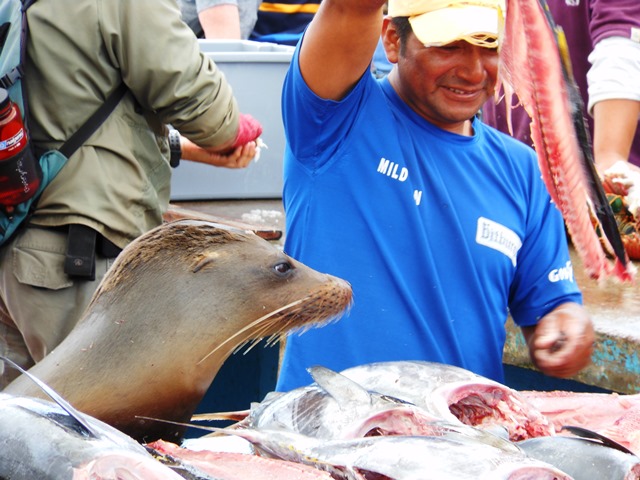
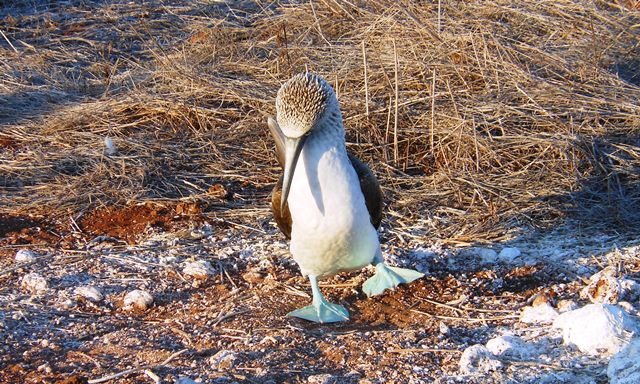
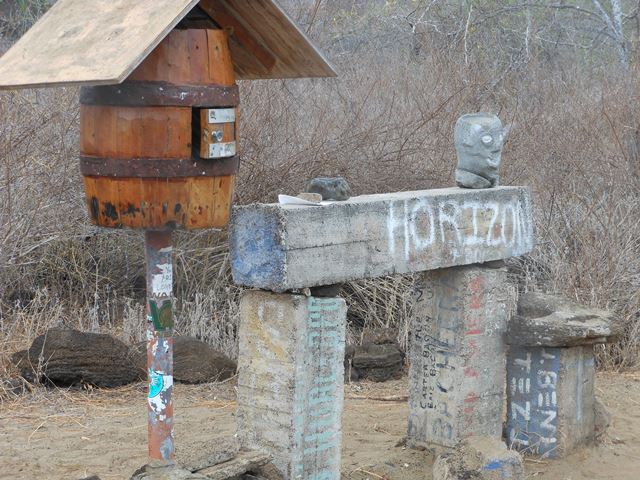
Attracted by the hordes of gold the Spanish were hauling from the New World, pirates began establishing themselves along the Pacific Coast, in order to raid the Spanish vessels running between Peru and Panama. The Galapagos, with its abundant supply of tortoise meat, became a favourite place to resupply the larder. Tortoises can survive for months without water and so live tortoises could be stored in the vessels’ holds without any need to feed and water them. By 1790 the pirates had been replaced by the whalers. Captain James Colnett was commissioned by the British Government to investigate the possibility of establishing a sperm-whale fishery based in the islands. The whalers were a hungry lot. During the 19th century it’s thought that they ate some 200,000 tortoises. The post barrel at Post Office Bay was a place where sailors could deposit their post and vessels returning to Europe would call by to collect the mail to take it back with them.

For our six day trip of the western islands we joined the 72 metre MV Santa Cruz, carrying 80 passengers. We had wanted to take a smaller boat with less passengers but the weather at this time of year is pretty choppy. During our passage from Isabela Island to Santa Cruz Island the glasses, cups and books on the bedside table were sent flying across the cabin, so we were pretty happy to be on a bigger ship.
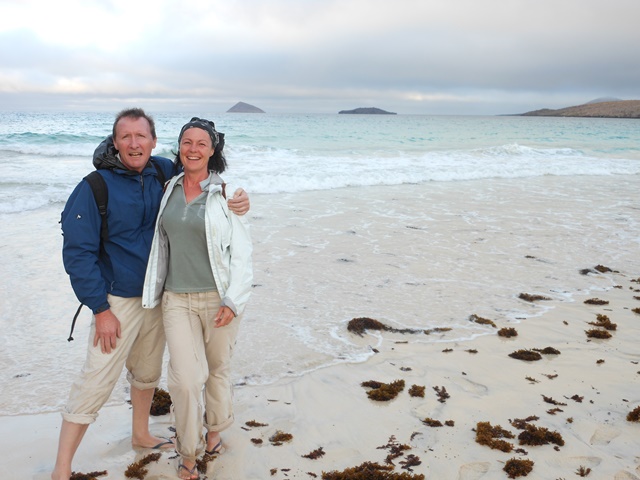
Today there are some 30,000 inhabitants living on the islands. Tourism is the principal employer, followed by fishing and farming. Some of the earlier settlers were a curious bunch. An Irishman by the name of Patrick Watkins was marooned on Isla Santa Maria in 1807. He grew vegetables which he traded for rum with passing ships. For two years he remained as drunk as a lord, finally stealing a small boat which he crewed with five slaves and sailed to Guayaquil. He arrived alone in Guayaquil and the fate of the slaves was never known. In 1891 Manuel J cobos established a sugar factory on San Cristobal. He employed jailed mainlanders and minted his own coins. 13 years later he was murdered by his staff. In the 1930s three groups of German settlers arrived on Floreana. One was a baroness who brought three lovers. The other was Dr Friedrich Ritter, who had all his teeth pulled out to avoid dental problems. The third to arrive were the Wittmers of Cologne. One by one the settlers died in strange circumstances. The baroness and her three lovers simply disappeared. Dr Ritter ate a chicken and died two days later. The only ones to survive were the Wittmers. Margaret Wittmer died in 2000 at the age of 95. I don’t think she was murdered. Her children run a small hotel in Puerto Velasco Ibarra.
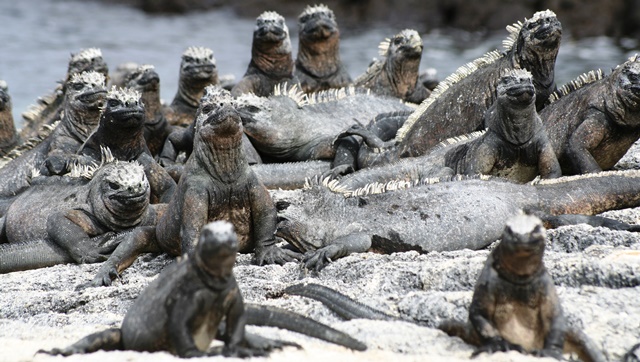

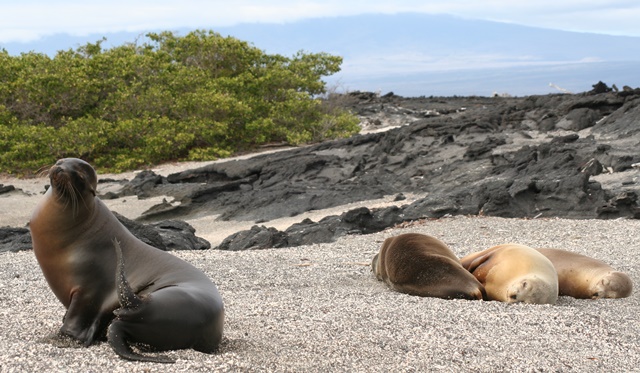

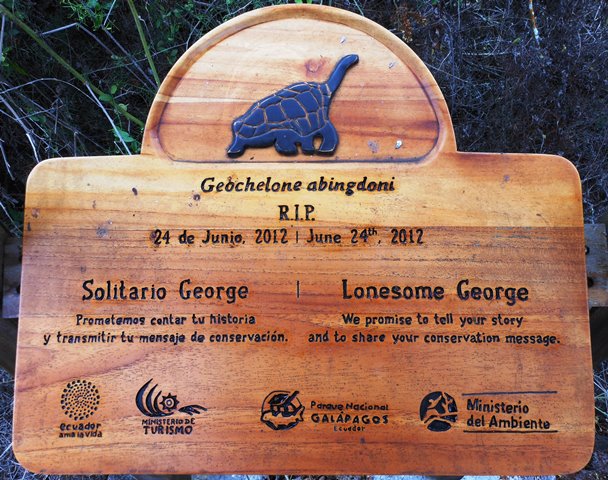
Lonesome George was quite a famous tortoise. David Attenborough loved him. Sadly he died last year, the last of his lineage. Apparently they brought him from the island where he lived to the Charles Darwin Research Centre in the hope he would mate with the three lusty females they placed him in a pen with. But George was too fat to do anything other than nibble a bit of lettuce and so they put him on a six month diet, which did wonders for his sex-drive. However, being the human equivalent of several hundred years old, unsurprisingly he was firing blanks. No matter how long the eggs remained buried, nothing popped up from the ground. So, after all this dieting and the sex and the disappointments, George dropped dead – which should have told the scientists a thing or two. Hardly had George been laid to rest than the folks at the research centre imported a new stud from America. His name is Super Diego and things are going just swell. 2000 new tortoises have been created in the research centre (not all of them Diegos). A great success! How many tortoises can the islands support? I never asked. I’m sure the scientists have it all under control.
